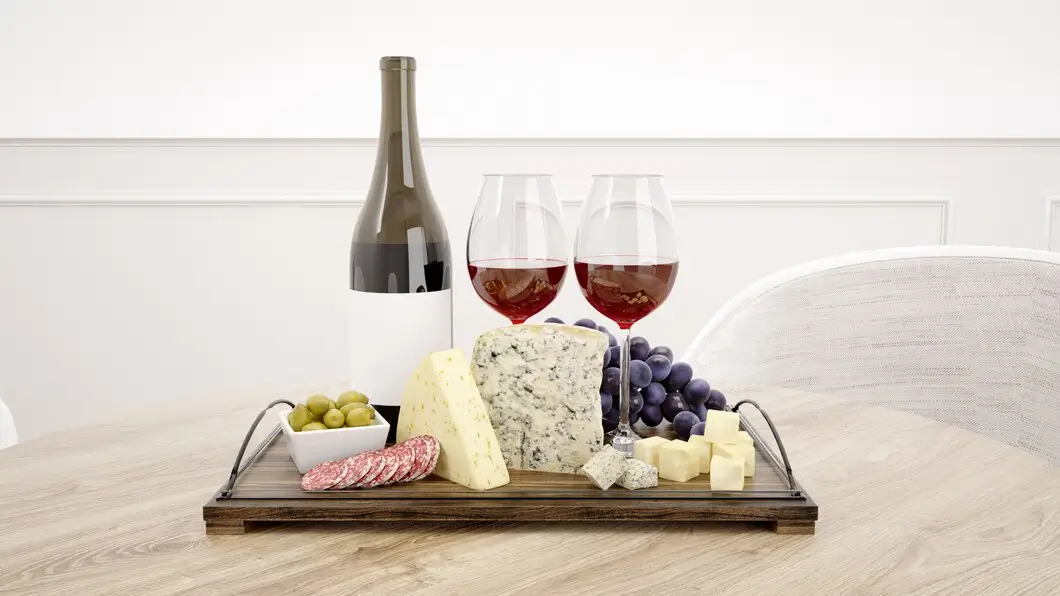A Connoisseur’s Guide To Wine & Cheese Pairing: Unveiling The Perfect Harmony
Wine and cheese pairing is an art that has been refined over centuries, offering a sensory journey that engages the palate in a dance of flavors and textures. The delicate interplay between the nuanced notes of wine and the diverse profiles of cheeses creates a symphony of tastes that can elevate your culinary experience to new heights.
Table of Contents
In this comprehensive guide, we will explore the fundamentals of wine and cheese pairing, providing insights into the principles that govern this sophisticated culinary practice.
Understanding Flavor Profiles:
Before delving into the specifics of wine and cheese pairing, it’s essential to grasp the basic principles of flavor profiles. Wines and cheeses exhibit a wide range of tastes, from sweet and fruity to savory and sharp.
The key is to find complementary and contrasting elements that enhance each other rather than overpowering the palate.
1. White Wines:
Crisp and Refreshing: Pair with fresh and light cheeses like goat cheese, feta, or mozzarella.
Full-bodied and Oaky: Complement with creamy cheeses such as brie, camembert, or gouda.
2. Red Wines:
Light and Fruity: Match with soft and mild cheeses like cheddar, gouda, or edam.
Bold and Tannic: Contrast with aged cheeses such as parmesan, pecorino, or gorgonzola.
3. Rosé Wines:
Dry and Crisp: Pair with semi-soft cheeses like havarti, fontina, or young gouda.
Sweet and Fruity: Balance with creamy cheeses such as brie or camembert.
4. Sparkling Wines:
Brut or Extra Brut: Perfect with salty cheeses like blue cheese, gorgonzola, or manchego.
Demi-Sec or Sweet Sparkling: Pair with creamy and mild cheeses like brie or triple cream.
Pairing Tips and Tricks:
1. Intensity Matching:
Pair light wines with delicate cheeses and robust wines with stronger, aged cheeses.
Balance the intensity of flavors to avoid one element overpowering the other.
2. Texture Harmony:
Creamy cheeses complement the effervescence of sparkling wines, while crisp whites can cut through the richness of creamy cheeses.
Full-bodied red wines work well with hard, aged cheeses, enhancing the overall texture experience.
3. Regional Pairing:
Consider the origin of the wine and cheese. Many traditional pairings have evolved over time based on the culinary traditions of specific regions.
4. Acidity Balance:
High-acid wines, like Sauvignon Blanc, can balance the richness of fatty cheeses.
Creamy cheeses can mellow the tannins in red wines, creating a more harmonious combination.
5. Sweet and Savory:
Sweet wines, such as dessert wines or late harvest varieties, can complement the saltiness of certain cheeses, creating a delightful contrast.
Experiment and Explore:
While these guidelines provide a solid foundation for wine and cheese pairing, the beauty of this art lies in experimentation.
Don’t be afraid to venture beyond conventional pairings and discover your own preferences. Host a wine and cheese tasting party to explore the myriad possibilities and share the joy of discovering perfect pairings with friends and family.
Conclusion:
Wine and cheese pairing is a timeless pursuit that combines the sensory pleasures of taste, aroma, and texture. By understanding the fundamental principles of flavor profiles and experimenting with different combinations, you can embark on a culinary journey that will enhance your appreciation for these age-old delicacies.
Whether you’re a seasoned connoisseur or a novice enthusiast, the world of wine and cheese pairing invites you to savor the magic of harmonious flavors and indulge in the rich tapestry of culinary artistry. Cheers to the perfect pairing!

